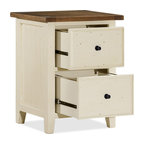
Pain is usually located behind your breastbone, but may occur in the upper right abdominal area.Acute pain, possibly very severe, that occurs very suddenly.Silent stones may go undiagnosed until they begin to cause discomfort.įor those that are not quite so lucky, the symptoms my include Studies show that most people with silent stones may not experience any symptoms at all for awhile, remaining symptom-free for years and requiring no treatment. Pregnant women, or women who have used birth control pills or estrogen replacement therapyĪ person with gallstones may have what are called "silent stones".Men and women who go on "crash" diets or who lose of lot of weight quickly.Those who are most likely to develop gallstones are: They will join the estimated 20 million Americans -roughly 10 percent of the population- who already have gallstones. Gallstones affect approximately one million people every year, with women being twice as likely to become afflicted than men. No clear relationship has been proven between gallstone formation and a particular diet. Increased levels estrogen as a result of pregnancy.Low calorie, and rapid weight-loss diets.Other factors also seem to play a role in causing gallstones but how is not clear. These proteins may either promote cholesterol crystallization into gallstones. Gallstones may also be created by proteins in the liver and bile. If the gallbladder does not perform as it should, the bile may not be able to makes its way into the bile duct, instead becoming concentrated and forming small crystals. This small but muscular organ squeezes to force bile into the bile duct. Movement of the gallbladder is referred to as gallbladder motility. Aside from a high concentration of cholesterol, there are two other factors that seem to be of importance in causing gallstones. When the bile contains too much cholesterol and not enough bile salts, cholesterol gallstones may develop. gallbladder movement (the gallbladder is a muscular sack that contracts).What causes gallstones?Īdvancements have been made in better understanding the gallstone formation process. Stones that become stuck in the ducts that lead to the duodenum can be both agonizing and dangerous. Thus, bile duct stones are gallbladder stones that have become lodged in the bile duct. However, a stone may become lodged in your bile duct due to the size of the stone or the anatomy of the biliary tree. Gallstones that move out of the gallbladder can pass into your stomach. It may even develop several thousand stones.


The gallbladder may develop many smaller stones, or a single, often large one. Gallstones can be as small as a grain of salt or as large as a golf ball. hereditary blood cell disorders (such as sickle cell anemia).About twenty percent of gallstones are pigment stones. Pigment stones are small, dark stones made of bilirubin and calcium salts that are found in bile. Eighty percent of gallstones are formed this way. Cholesterol stones, as the name implies, are made of cholesterol and appear light in color. Gallstones, which are created in the gallbladder, form when substances in the bile create hard, crystal-like particles.


 0 kommentar(er)
0 kommentar(er)
